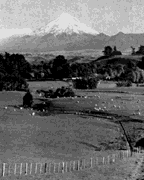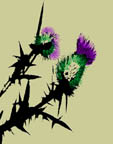![]()

![]()

|
Welcome, one and all! This is a site that is loosely dedicated to the preservation and glorification of the art of making the Shepherd's Crook.
Although this art form is still alive and well in Great Britain, here in the USA there is only limited interest. Walking sticks of all kinds are far more commonly created. Perhaps the limited dependence on sheep is the reason. What ever the reason, I'd like to tell a little about it, hoping to interest new people, and maybe get some carvers to work.
|
|
|
Because of the increased interest in Sheepdog Trialing, there seems to be a slowly increasing wave of interest, although many of the newer folks seem satisfied with either metal or fiberglass sticks. The availability of rams horn is also a problem, since mutton is passed over in favor of beef in the US, and lamb isn't a lot more popular. Water Buffalo Horn is fairly easily found, and exotic woods are being used to a greater extent all the time. Competition among stick makers in the US is nearly non existent, but carving shows are starting to include us with the walking stick folks sometimes.
The shepherds crook, smooth and warm to the hand, is, at its simplest a basic tool of the shepherd, and at its most complex, an impressive work of art, and example of the finest hand craftsmanship and carving, with its roots in the highlands of Great Britain. |
Those that are used in everyday work tend to be a bit longer than what are called "Market, or Show Sticks" and, are often configured into what is called a leg cleak or crook as well as what most people visualize, which is a neck crook. Market sticks, and show or "fancy" sticks are usually made of horn of some type, and are carved, more, or less intricately with Thistles, Dogs, squirrels, Pheasants, or even Fish for the head. It is the unofficial standard that the space between the shank and the nose of a neck crook should be the width of the four fingers of a persons hand, or wide enough to comfortably slip over the forearm. The leg cleak (which is used to catch sheep by a hind foot) has a spacing of one old English penny, (what ever that may be), or 31 mm, in more current units.
Probably the most important considerations in selecting a crook, are that it is comfortable to walk with and to carry, and that it balances in such a way that it feels like it is a part of your pace. The longer that a person uses a crook, as a general rule, the shorter lengths they prefer. Most people start out liking quite a long crook, even shoulder height, but eventually settle on a length that will touch the ground while hooked over a slightly raised forearm, or very slightly longer. Balance is also an important consideration, although it is quite hard to explain. The relative weight of the head, and the shank will make the tip of the stick almost want to rise off the ground between steps. Generally heavier, more bulky heads require heavier shanks to feel balanced. There are several quite nice crooks on the market that are made of aluminum and or plastic that are very strong, so if you intend to use your crook to catch sheep, one of these would likely be the better choice. Just remember that the best crooks are a real extension of you and are an outward expression of your personality, so find one that feels good to hold, that you like to look at, and that you like to walk with.

If you decide to try making your own stick, be sure not to expect too much of yourself at first, horn of any kind is a difficult medium to work with and the best sticks might take months to finish. The best rule is not to hurry, it takes a long time for the heat to soak into horn, or wood to bend them, and to rush is to court failure. Most of all have fun and be creative, try to find others with the same interest, There are several competitions in the Northwest you might want to enter.
   |    |
